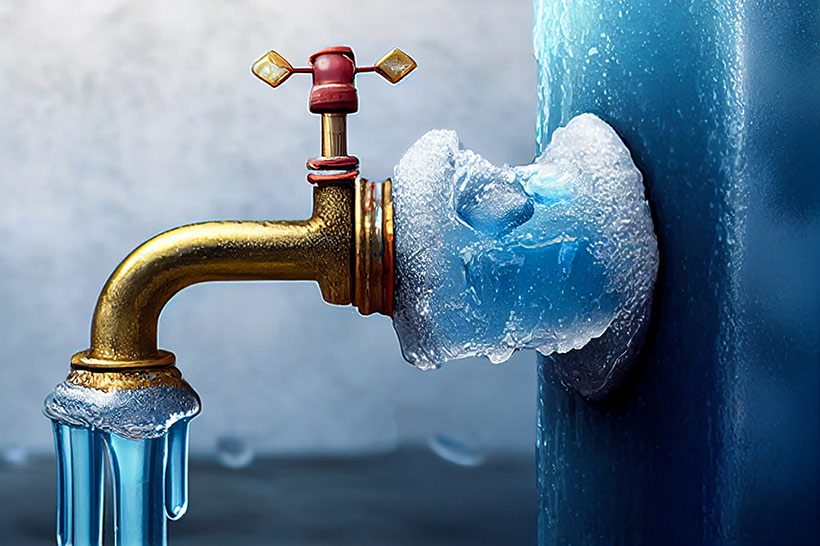Tips to Protect Your Pipes from Cold Weather: Specialist Advice
Tips to Protect Your Pipes from Cold Weather: Specialist Advice
Blog Article
Just how do you really feel with regards to How to Prevent Your Pipes From Freezing?

Winter can ruin your plumbing, particularly by freezing pipes. Right here's just how to prevent it from taking place and what to do if it does.
Introduction
As temperature levels decrease, the threat of icy pipelines increases, possibly resulting in pricey fixings and water damages. Recognizing exactly how to prevent icy pipes is critical for home owners in chilly environments.
Comprehending Icy Pipes
What creates pipelines to ice up?
Pipes freeze when revealed to temperature levels listed below 32 ° F (0 ° C) for prolonged durations. As water inside the pipes ices up, it increases, taxing the pipe walls and possibly creating them to rupture.
Dangers and problems
Icy pipes can cause water supply interruptions, property damage, and expensive repairs. Ruptured pipes can flooding homes and cause considerable architectural damage.
Indications of Frozen Water Lines
Identifying icy pipes early can prevent them from bursting.
How to recognize frozen pipelines
Search for reduced water flow from faucets, uncommon odors or noises from pipelines, and visible frost on subjected pipes.
Prevention Tips
Protecting prone pipes
Wrap pipes in insulation sleeves or make use of warmth tape to protect them from freezing temperatures. Concentrate on pipes in unheated or exterior areas of the home.
Heating strategies
Maintain indoor rooms appropriately warmed, particularly locations with plumbing. Open closet doors to allow warm air to distribute around pipelines under sinks.
Protecting Outside Pipes
Garden hoses and outside faucets
Disconnect and drain garden tubes prior to winter. Mount frost-proof spigots or cover outside faucets with protected caps.
What to Do If Your Pipes Freeze
Immediate activities to take
If you presume icy pipelines, keep taps available to relieve stress as the ice melts. Make use of a hairdryer or towels soaked in warm water to thaw pipelines slowly.
Long-Term Solutions
Structural modifications
Think about rerouting pipelines away from exterior wall surfaces or unheated areas. Add added insulation to attic rooms, basements, and crawl spaces.
Updating insulation
Invest in premium insulation for pipelines, attics, and wall surfaces. Correct insulation assists keep regular temperature levels and lowers the risk of frozen pipelines.
Final thought
Avoiding icy pipes calls for aggressive procedures and quick feedbacks. By understanding the reasons, indications, and preventive measures, house owners can shield their pipes throughout cold weather.
6 Proven Ways to Prevent Frozen Pipes and Protect Your Home
Disconnect and Drain Garden Hoses
Before winter arrives, start by disconnecting your garden hoses and draining any remaining water. Close the shut-off valves that supply outdoor hose bibs and leave the outdoor faucet open to allow any residual water to drain. For extra protection, consider using faucet covers throughout the colder months. It’s also important to drain water from any sprinkler supply lines following the manufacturer’s directions.
Insulate Exposed Pipes
Insulating your pipes is an effective way to prevent freezing. Pipe insulation is readily available at home improvement stores and is relatively inexpensive. Pay close attention to pipes in unheated areas such as the attic, basement, crawl spaces, or garage. Apply foam insulation generously to create a buffer against the cold. You can also wrap your pipes in heat tape or thermostat-controlled heat cables for added warmth.
Seal Air Leaks
Inspect your home for any cracks or openings that could let in cold air. Seal any holes around the piping in interior or exterior walls, as well as the sill plates where your home rests on its foundation. Additionally, make sure to keep your garage door closed unless you’re entering or exiting. Leaving it open creates a significant air leak that can lead to frozen pipes.
Allow Warm Air Circulation
During cold snaps, it’s essential to allow warm air to circulate evenly throughout your home. Leave interior doors ajar to promote better airflow. Open kitchen and bathroom cabinets to help distribute heat consistently around the rooms. If you have small children or pets, be sure to remove any household chemicals or potentially harmful cleaners from open cabinets for safety.
Let Faucets Drip
A small trickle of water can make a big difference in preventing ice formation inside your pipes. When temperatures drop significantly, start a drip of water from all faucets served by exposed pipes. This continuous flow helps prevent the water from freezing. Additionally, running a few faucets slightly can relieve pressure inside the pipes, reducing the chances of a rupture if the water inside does freeze.
https://choateshvac.com/6-proven-ways-to-prevent-frozen-pipes-and-protect-your-home/

Do you enjoy reading up on How To Avoid Freezing Pipes? Give a comment down the page. We'd be delighted to find out your ideas about this write-up. In hopes that you come back again before long. In case you liked our blog entry kindly don't forget to pass it around. We enjoy reading our article about How to Prevent Your Pipes From Freezing.
Call Today Report this page